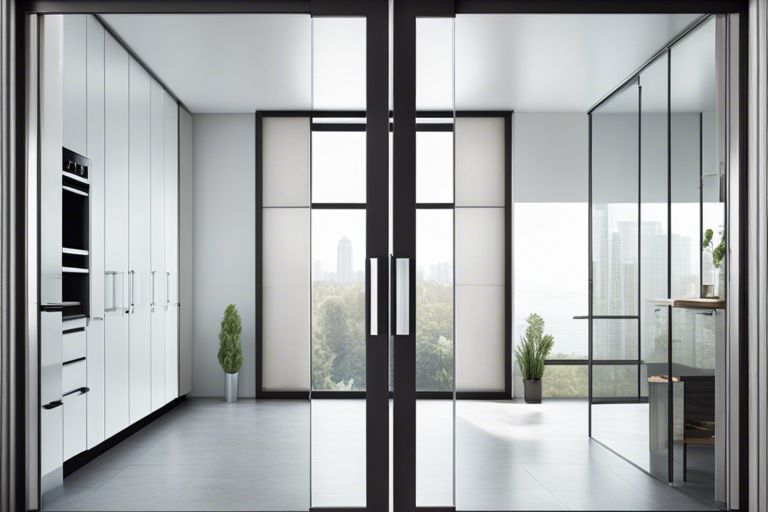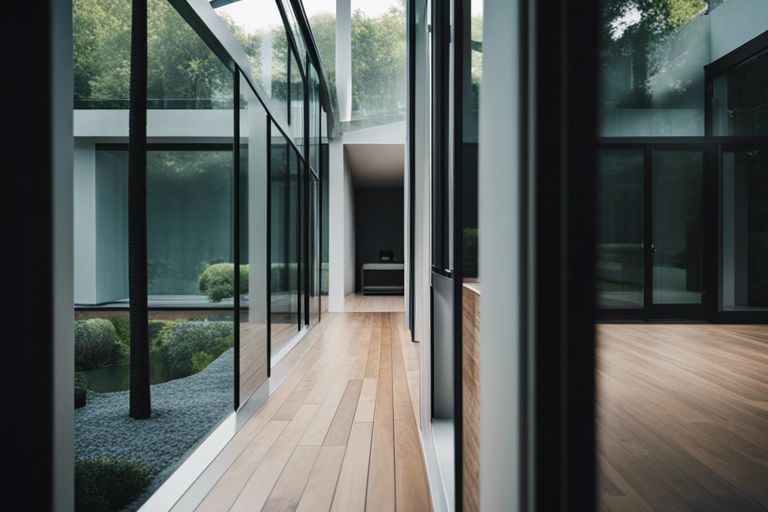When it comes to choosing rooflights for your home, the energy efficiency of flat rooflights is a crucial factor to consider. Understanding how flat rooflights can impact your energy consumption is essential for making an informed decision. From reducing heat loss and lowering your energy bills to enhancing natural light intake and decreasing the need for artificial lighting, the benefits of energy-efficient flat rooflights are numerous. However, it’s important to select high-quality, well-insulated flat rooflights to maximise their energy-saving potential and avoid heat loss during colder months. By investing in energy-efficient flat rooflights, you not only improve the sustainability of your home but also create a more comfortable and cost-effective living environment. Stay informed and make the best choice for your home.
Key Takeaways:
- Energy Efficient Design: Flat rooflights offer excellent energy efficiency by allowing natural light to enter the interior spaces, reducing the need for artificial lighting and heating, thus lowering energy consumption.
- Thermal Performance: High-quality flat rooflights are designed with thermal breaks and double or triple glazing to minimise heat loss and maintain a comfortable indoor temperature all year round.
- Sustainable Living: Installing energy-efficient flat rooflights not only helps to reduce electricity bills but also contributes to a more sustainable living environment by decreasing carbon emissions and promoting natural daylight usage.

Understanding Flat Rooflights
Definition and Basic Principles
Flat rooflights are modern roof windows that are installed flush with the roofline, allowing natural light to flood into the space below. They are designed to provide maximum daylight and a sense of openness in rooms with flat roofs. The basic principle behind flat rooflights is to enhance energy efficiency by reducing the need for artificial lighting during the day, thus lowering overall energy consumption.
By capturing and utilising daylight efficiently, flat rooflights can help reduce reliance on artificial lighting sources and contribute to a more sustainable way of living. The design of flat rooflights ensures that they are both functional and aesthetically pleasing, seamlessly blending into the architecture of the building while enhancing the interior with natural light.
Types of Flat Rooflights
Fixed flat rooflights are non-opening and provide a continuous source of natural light, ideal for spaces where ventilation is not a priority. Opening flat rooflights, on the other hand, can be tilted or fully opened to allow for ventilation as well as natural light. Walk-on rooflights are designed to be load-bearing and can be installed in outdoor areas or terraces to bring natural light into lower levels of a building. Roof lanterns are another type of flat rooflight that add a stylish architectural feature to a property while increasing the natural light intake. Solar-powered rooflights utilise renewable energy from the sun to operate, making them an eco-friendly lighting solution.
| Fixed flat rooflights | Opening flat rooflights |
| Walk-on rooflights | Roof lanterns |
| Solar-powered rooflights |
Assume that the type of flat rooflight you choose will depend on the specific requirements of your space, such as ventilation needs, design preferences, and energy efficiency goals.

Factors Affecting Energy Efficiency
When it comes to the energy efficiency of flat rooflights, there are several factors that come into play. Understanding these factors can help you make informed decisions when choosing the right rooflight for your property.
Materials and Insulation Properties
The materials used in the construction of flat rooflights play a crucial role in their energy efficiency. Opting for high-quality materials that offer good insulation properties can help reduce heat loss and improve overall energy efficiency. Materials such as uPVC and aluminium are commonly used in the manufacturing of rooflights due to their durability and thermal performance. Proper insulation can also prevent condensation build-up, which can lead to issues such as mould growth. When selecting a rooflight, it is essential to consider the insulation properties of the materials used to ensure maximum energy efficiency.
Glazing Technology and Coatings
Glazing technology and coatings are key factors that influence the energy efficiency of flat rooflights. Double or triple glazing can provide better insulation and reduce heat transfer, helping to maintain a comfortable internal temperature and reduce the need for additional heating. Low-emissivity coatings are also commonly applied to glazing to further improve thermal efficiency by reflecting heat back into the room. Choosing rooflights with advanced glazing technology and coatings can significantly enhance energy efficiency and contribute to a more sustainable living space.
It is worth noting that investing in high-quality glazing technology and coatings may initially incur a higher cost, but the long-term energy savings and environmental benefits make it a worthwhile investment. By prioritising energy-efficient materials and technologies, you can create a more sustainable and environmentally-friendly living environment. Assume that with the right choices, you can enjoy both a brighter space and lower energy bills in the long run.
Installation and Maintenance Considerations
Proper Installation Techniques
When it comes to installing flat rooflights, it is crucial to follow proper installation techniques to ensure they perform efficiently and effectively. One key aspect is to make sure that the roof opening is accurately measured and cut to fit the rooflight perfectly. This will prevent any future issues such as leaks or drafts.
Additionally, the use of high-quality sealing materials and flashing is essential to create a watertight seal around the flat rooflight. Properly sealing the rooflight will prevent water ingress and enhance the overall energy efficiency of the building.
Maintenance for Optimal Performance
Regular maintenance is crucial to ensure the flat rooflights continue to perform at their best. Cleaning the glass surfaces at least twice a year will not only enhance natural light penetration but also improve the aesthetic appeal of the room. It is also important to inspect the seals and gaskets regularly for any signs of wear or damage.
Moreover, clearing any debris such as leaves or dirt from the drainage channels is essential to prevent water pooling on the rooflight. Regular inspections and maintenance will prolong the lifespan of the flat rooflights and ensure they operate at optimal performance levels for years to come.
Investing time and effort in routine maintenance tasks will not only save costs in the long run by preventing major issues but also enhance the energy efficiency of the flat rooflights, leading to a more sustainable and comfortable living environment. Stay proactive with maintenance to enjoy the full benefits of your flat rooflights.
Compliance and Regulation
Building Regulations and Standards
When it comes to the installation of flat rooflights, it is crucial to adhere to building regulations and standards set by local authorities. These regulations are in place to ensure the safety, energy efficiency, and structural integrity of buildings. Compliance with these regulations is mandatory, and failure to do so can result in fines, legal implications, and potential safety hazards.
Building regulations cover various aspects such as thermal performance, air leakage, and ventilation requirements, which are all critical factors in the energy efficiency of buildings. It is essential to work with reputable suppliers and installers who are well-versed in these regulations to guarantee that your flat rooflights meet the necessary standards.
Certification and Energy Rating Systems
For consumers looking to assess the energy efficiency of flat rooflights, certification and energy rating systems play a key role. These systems, such as the Energy Saving Trust Recommended certification, provide valuable insight into the performance of products in terms of energy efficiency. By choosing flat rooflights that are certified by reputable organisations, consumers can have confidence in the quality and efficiency of the products they are investing in.
Energy rating systems also enable consumers to compare different products based on their energy performance, helping them make informed decisions that can lead to long-term energy and cost savings.

The Energy Efficiency of Flat Rooflights – What You Need to Know
Flat rooflights can significantly impact the energy efficiency of a building by providing natural light and reducing the need for artificial lighting during the day. The design and materials used in flat rooflights play a crucial role in determining their energy efficiency. Low-emissivity coatings, double or triple glazing, and insulated frames are some features to look for when seeking energy-efficient flat rooflights. By investing in high-quality, energy-efficient flat rooflights, you can not only reduce your energy consumption but also create a more comfortable and sustainable living or working environment. Understanding the key factors that contribute to the energy efficiency of flat rooflights is essential for making informed decisions when choosing the right rooflights for your property.
FAQ
Q: What is the energy efficiency of flat rooflights?
A: The energy efficiency of flat rooflights is determined by factors such as the quality of materials used, the design of the rooflight, and the glazing technology. High-quality rooflights with thermally efficient glazing can help reduce heat loss and improve insulation in buildings, leading to lower energy consumption and heating costs.
Q: How can flat rooflights contribute to a more sustainable building design?
A: Flat rooflights can contribute to a more sustainable building design by maximising natural light and reducing the need for artificial lighting during the day. This not only helps to lower electricity usage but also creates a healthier and more comfortable indoor environment for occupants. Additionally, energy-efficient rooflights can help improve thermal performance and reduce the carbon footprint of a building.
Q: What are some key considerations when choosing energy-efficient flat rooflights?
A: When selecting energy-efficient flat rooflights, it is important to consider factors such as U-values, solar heat gain coefficient (SHGC), and visible light transmittance. Choosing rooflights with low U-values and appropriate SHGC can help maximise insulation while controlling heat gain. Additionally, selecting rooflights with high visible light transmittance can enhance natural daylighting and improve indoor aesthetics and comfort.






